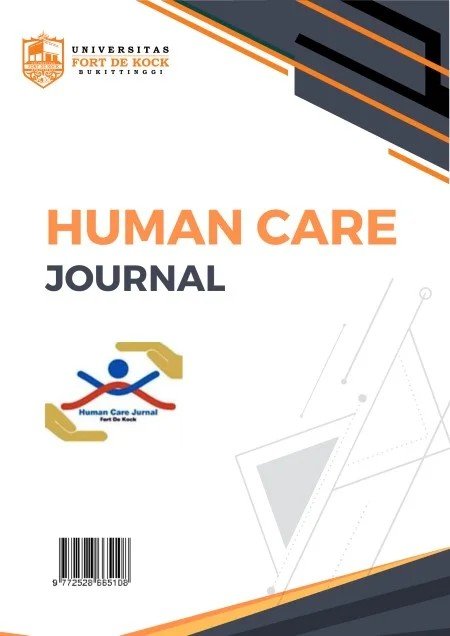ANALISIS FAKTOR PENYEBAB STUNTING DI WILAYAH KERJA PUSKESMAS MUARA MADRAS PROVINSI JAMBI
DOI:
https://doi.org/10.32883/hcj.v9i1.2924Abstract
Stunting (short stature) is a state of failure to reach one's growth potential caused by chronic malnutrition and recurrent disease during childhood, in 2017 22.2% or around 150 million toddlers in the world were stunted.This research will be conducted at the Muara Madras Health Center, Marangin Regency, Jambi Province in 2021. The research method is a qualitative approach in the form of a case study.The research objective is to analyze the factors that cause stunting at the Muara Madras Health Center, Jambi Province 2021.The results of the study, Informant1 experienced stunting because when he was just born, this mother's child had experienced nutritional problems which caused him to be stunted. Informant2 lacks maternal knowledge about stunting because this mother only graduated from elementary school, poor sanitation in the house where she lives, poor parenting to children, the slum where the family lives and when given balanced nutritional food from the puskesmas is not given for her child's needs but for other things, Informant3 married underage and had a low education which automatically made this mother have low knowledge and poor parenting to children. Informants 4 and 5 said that what causes stunting in the puskesmas working area is parenting, feeding patterns, exclusive breastfeeding and maternal knowledge. There are 4 factors that cause stunting, namely maternal knowledge, parenting, feeding patterns, exclusive breastfeeding in the Muara Madras Health Center Working Area, Jambi Province 2021. It is recommended that the Muara Madras Health Center be able to reduce the stunting rate in the work area and be able to make efforts to prevent stunting in toddlers
References
BKKBN. (2022). Analisis Situasi untuk Percepatan Penurunan Stunting di DI Yogyakarta.
Gustin, R. K., Ramadanti, T., Ediana, D., & Putra, A. S. (2023). ANALISIS PEMETAAN FAKTOR RESIKO KEJADIAN STUNTING. 8(1), 36–44.
Kinanti Rahmadhita. (2020). Permasalahan Stunting dan Pencegahannya Pendahuluan. 11(1), 225–229. https://doi.org/10.35816/jiskh.v10i2.253
Mulyanto, A. D. (2015). Faktor-faktor yang berhubungan dengan perilaku ibu hamil dalam melakukan kunjungan antenatal care.
Nisa, L. S. (2018). KEBIJAKAN PENANGGULANGAN STUNTING DI INDONESIA. 13, 173–179.
Prilly, N., Assegaf, N., & Inayah. (2020). Analisis Pelaksanaan Program Pencegahan Stunting di Indonesia. December.
Ramadanti, T. (2022). PENGARUH KONSELING GIZI TERHADAP POLA ASUH IBU BALITA STUNTING DI KABUPATEN PASAMAN BARAT. 1, 139–143.
Ramadanti, T., Yanti, C. A., Prima, U., Bukittinggi, N., Prima, U., & Bukittinggi, N. (2023). ANALISIS RISIKO PENYEBAB STUNTING PADA BALITA DI. 8(October), 541–551.
Rustiyani, L., & Susilo, R. (2020). ANALISIS FAKTOR YANG MENYEBABKAN STUNTING DI WILAYAH KERJA PUSKESMAS KEMANGKON. 5(4), 1025–1033.
Yulia, F., Sari, K., Khoiriyah, N., Ade, D., Nuarita, W., Kudus, U. M., Kudus, K., Tengah, J., Cirebon, U. M., & Barat, J. (2021). Pola Konsumsi Balita Selama PPKM. 2(2), 13–20.
Downloads
Published
How to Cite
Issue
Section
License
Copyright (c) 2025 Human Care Journal

This work is licensed under a Creative Commons Attribution 4.0 International License.
Setiap naskah yang terbit di jurnal Human Care ini adalah dianggap sebagai karya dari penulis.
Pemegang hak cipta adalah jurnal Human Care. Semua pembaca memiliki akses untuk masuk ke jurnal Human Care dan menjadikan naskah yang terbit di jurnal Human Care sebagai referensi.



